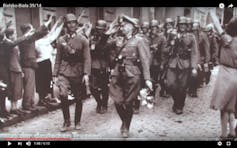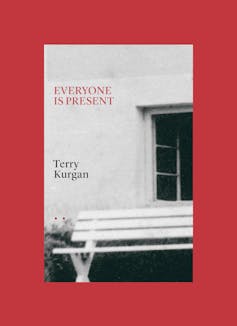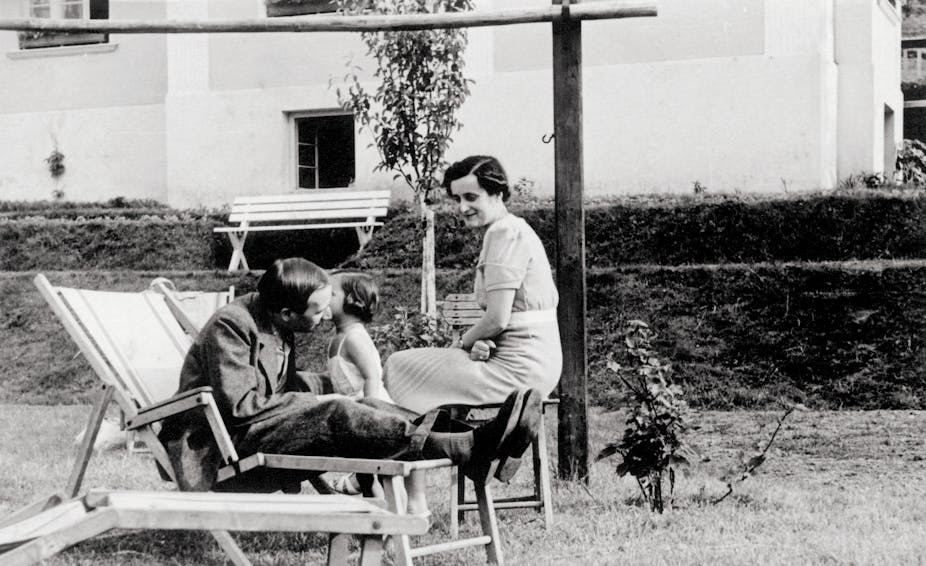The first photograph in Terry Kurgan’s Everyone is Present shows what appears to be a mid-20th century idyllic scene of a young family at a spa in southern Poland.
It’s a scene that puts one in mind of the reverie in old photographs described by French theorist Roland Barthes in Camera Lucida and the nostalgic fragments used so evocatively by the Anglo-German novelist W.G Sebald in Austerlitz and elsewhere.
But Kurgan, the Johannesburg-based artist, writer and curator, is more forceful in her efforts to wrest meaning from this and other images. She “longs to be able to sit inside this photograph”, as she puts it, to work actively on its subject. She juxtaposes this image with others from the album she inherited from her grandfather, Jasek, to include the rest of the extended family and something of their complicated histories.
And she correlates the album with correspondence with family members and extracts from Jasek’s diary. That woman in the photograph is Jasek’s wife, Tusia, Kurgan’s grandmother. The child is Kurgan’s mother and the man reclining on the deck chair is Doctor Lax, who at that time was Tusia’s lover.
This photograph, she discovers, must have been taken in the summer of 1939, as Kurgan writes, “on the eve of one of the greatest atrocities of the twentieth century”.
In other photographs taken at the spa, people are shown reading newspapers that were likely reporting the threat from Nazi Germany. But there appears to be no reaction to this impending catastrophe. It’s the silence of these images on such matters that drives Kurgan to devise forceful new techniques to unlock their meaning.
She scans the photographs and scrutinises them on her computer screen: clothing, expressions, gestures all take on new significance as their detail is revealed. Objects or, as Kurgan calls them, “stuff”, are discovered and identified in the shadows and revealed as the repositories of intensely personal histories: what happened to the furniture when the apartment was abandoned? What happened to the cat? Did anybody water the flowers?
Connectedness, strife and betrayal
In another bid to get closer to her subject, Kurgan Googles the spa depicted in these early images. It is now trading on the days of its former glory, typified in the furniture and other objects shown in Jasek’s photographs.
The photograph that underpins the second section of the book on the family’s flight from Poland as the Nazis invaded – and were welcomed by a large section of the local population – shows the street below the family’s apartment in the town of Bielsko. It is deserted except for two unknown men who appear to react to Jasek at the window.

Kurgan uses Google Street View to determine that the neighbourhood has changed very little over the past 70 years. But while Google allowed Kurgan an astonishing proximity to this distant place, it’s the random connection with the two men on the street in Jasek’s photograph that she ultimately finds to be more meaningful and real. She writes:
As social beings, we want to matter, to be noticed, to connect.
In a similar bid for connection, Kurgan regularly elides time when she wants to communicate the horror of the Holocaust, the Polish population’s complicity in this history, and even the lasting influence of previous generations of one’s own family.
She reacts to Jasek’s account of his arrival at Auschwitz – the concentration camp at which more than 1.1 million people were killed during the Holocaust – while it was still an ordinary Polish market town:
This short sentence plummets through the page, through my desk, through this grey concrete floor, and through the deep red Johannesburg earth.
And, on Jasek’s photograph of Roza, formidable mother of his perennially flirtatious wife: “She rebuffs him and ourselves in that split-second moment, and forever, as we gaze at her across more than seventy-five years. Now.”
Kurgan weaves major themes of modern Jewish history around Jasek’s account, in the diary and the photographs, of the family’s perilous flight from Poland via Romania, Turkey, Syria, Iraq, India and Kenya to Cape Town.
She notes repeatedly the different forms of betrayal perpetrated on Eastern Europe’s Jews by the people they had lived among for generations, when endemic anti-Semitism erupted on the back of the Nazi invasions, whether through direct assault, complicity or simply looting. Again, these are the histories of “stuff”.

For the affluent, their flight was not quite comparable to the current waves of migration moving, as Kurgan notes, in the opposite direction into Europe. But the experience of prejudiced bureaucracy, arbitrary closing of borders and abrupt implementation of quotas must have been just as humiliating.
Jasek’s photographs seemingly ignore these awful realities. They focus for the most part on family life with its own versions of strife and betrayal. Indeed, by all accounts, it was impossible for those caught up in it to make sense of this maelstrom.
History is now
In the end, Kurgan herself visited Poland: both the sites of her personal family history and those monuments of evil, the death camps.
Noticing her own reflection in a mirror as she tries with her camera to capture “a molecule of air they might have breathed”, she accepts the impossibility of this “very particular kind of retrieval”.
But that, of course, is the point. History is as much about the questions we ask as the answers it provides. In this book – by turns lyrical, angry, frustrated and forgiving – time collapses. The photographic present joins the past to the present. Everyone is present. Now.
Fourthwall’s production of the book, the quality of its images and the sensitivity of its design provide an excellent vehicle for both the strength and the delicacy of Kurgan’s essay.

